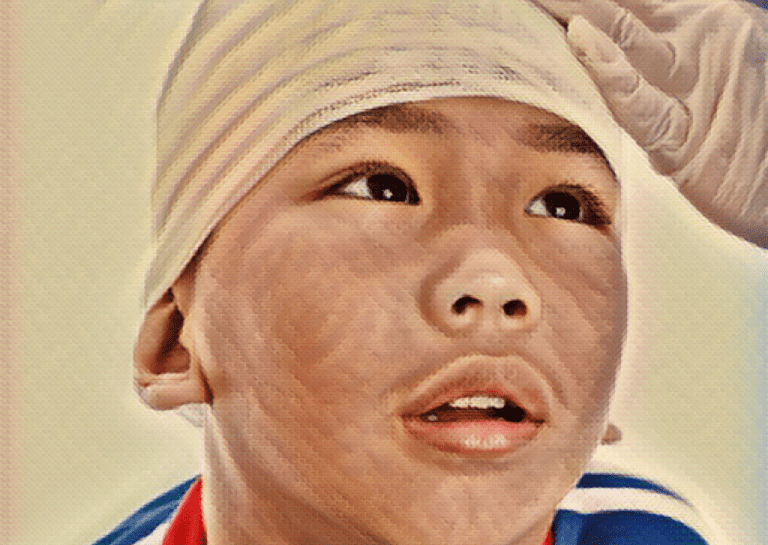Shaken Baby Syndrome, commonly known as Abusive Head Trauma, describes the serious head and neck injury that results when an infant is violently shaken. This severe form of abuse can occur when a caregiver forcefully shakes a baby either out of frustration or because the child is inconsolable. Shaken Baby Syndrome is among the most common causes of death and disability in children and babies.
Damage occurs because forceful shaking causes the child’s brain to move around and hit against the walls of the skull. The damage is more severe if the child’s head hits against a hard surface while being shaken. Injuries to the brain, neck, and eyes are the most common outcomes of Shaken Baby Syndrome.
The effects of Shaken Baby Syndrome are not always immediately visible, and the extent of the damage may not appear until later in a child’s life when they can potentially suffer from developmental and learning disabilities, impaired vision/blindness, and neurological deficiency.
Table of contents
Health consequences of Shaken Baby Syndrome
The damage sustained from shaking a baby can be irreversible or even life-threatening. The injuries sustained from Shaken Baby Syndrome are a direct result of abusive trauma and are therefore completely preventable.
The injuries and problems that can result from forcefully shaking an infant include:
- Ruptured blood vessels in the head
- Nerve damage
- Brain bruising (cerebral contusion)
- Brain swelling
- Impaired vision/blindness
- Hearing loss
- Seizures
- Brain damage
- Learning disabilities
- Developmental problems
- Long-term disability
Causes and Risk factors
Shaken Baby Syndrome usually occurs as a result of frustration and stress, causing the adult or caregiver to shake a baby who won’t stop crying. Shaking a baby or child is never okay, and the damage can be life-threatening.
Infants under 2 years of age are particularly at risk for Shaken Baby Syndrome due to their weak neck muscles and the large size of their heads in relation to their bodies. Babies’ underdeveloped neck strength and their inability to withstand forceful shaking make them extremely vulnerable to brain damage and neck injury.
Although children up to the age of 4 can fall victim to this type of abuse, the majority of cases arise in babies between 3 and 8 months old. The abuse is often inflicted by a frustrated parent or family member, particularly one who has a history of domestic violence or substance abuse.
Symptoms
Shaken Baby Syndrome can often go unnoticed or be mistaken for something else because the injuries are sustained internally and the severity of the damage is not always visible. The effects of this kind of physical abuse are often immediate and should be treated by a medical professional immediately.
The most common symptoms of Shaken Baby Syndrome are:
- Drowsiness
- Difficulty breathing
- Decreased movement or activity
- Inability to focus eyes
- Low appetite
- Skin that appears blue
- Crankiness or excessive crying
- Stiffness
- Vomiting
- Seizures
Diagnosis
Any child who displays the above symptoms or is known to have been abused in this way should be seen by a medical professional immediately. Shaken Baby Syndrome is under-diagnosed both because the symptoms can often cause it to be mistaken for something else and because the extent of the internal damage is not apparent upon physical inspection. Doctors are legally obligated to alert the authorities and child protection services if they suspect a child has been abused.
Tests and checks used to diagnose Shaken Baby Syndrome:
- Consulting a child’s medical history
- Checking for abnormal blood pressure
- Conducting physical exam to check for external injury
- Eye exam
- CT scan/MRI
- X-ray
Treatment
A child will need to undergo surgery if bleeding is detected in the brain. They may also require breathing support and oxygen therapy if their breathing is disrupted as a result of abuse. Physical therapy and rehabilitation are other potential treatment options.
A child who suffers developmental and learning deficiencies in the future as a result of Shaken Baby Syndrome may need additional treatment in later childhood.
Outlook
The outlook for children who are victims of Shaken Baby Syndrome is poor. Depending on the extent of the abuse, the damage can be irreparable and even result in the child’s death. Shaken Baby Syndrome is entirely preventable. Providing support and education to parents who may be struggling with the demands of looking after a young child is an important part of preventing this type of abuse.
References
“Shaken Baby Syndrome.” AANS, www.aans.org/en/Patients/Neurosurgical-Conditions-and-Treatments/Shaken-Baby-Syndrome.
“Shaken Baby Syndrome: MedlinePlus Medical Encyclopedia.” MedlinePlus, U.S. National Library of Medicine, 9 June 2021, medlineplus.gov/ency/article/007578.htm.
Harding, Brian, et al. “Shaken Baby Syndrome.” BMJ, vol. 328, no. 7442, 2004, pp. 720–721., doi:10.1136/bmj.328.7442.720.
